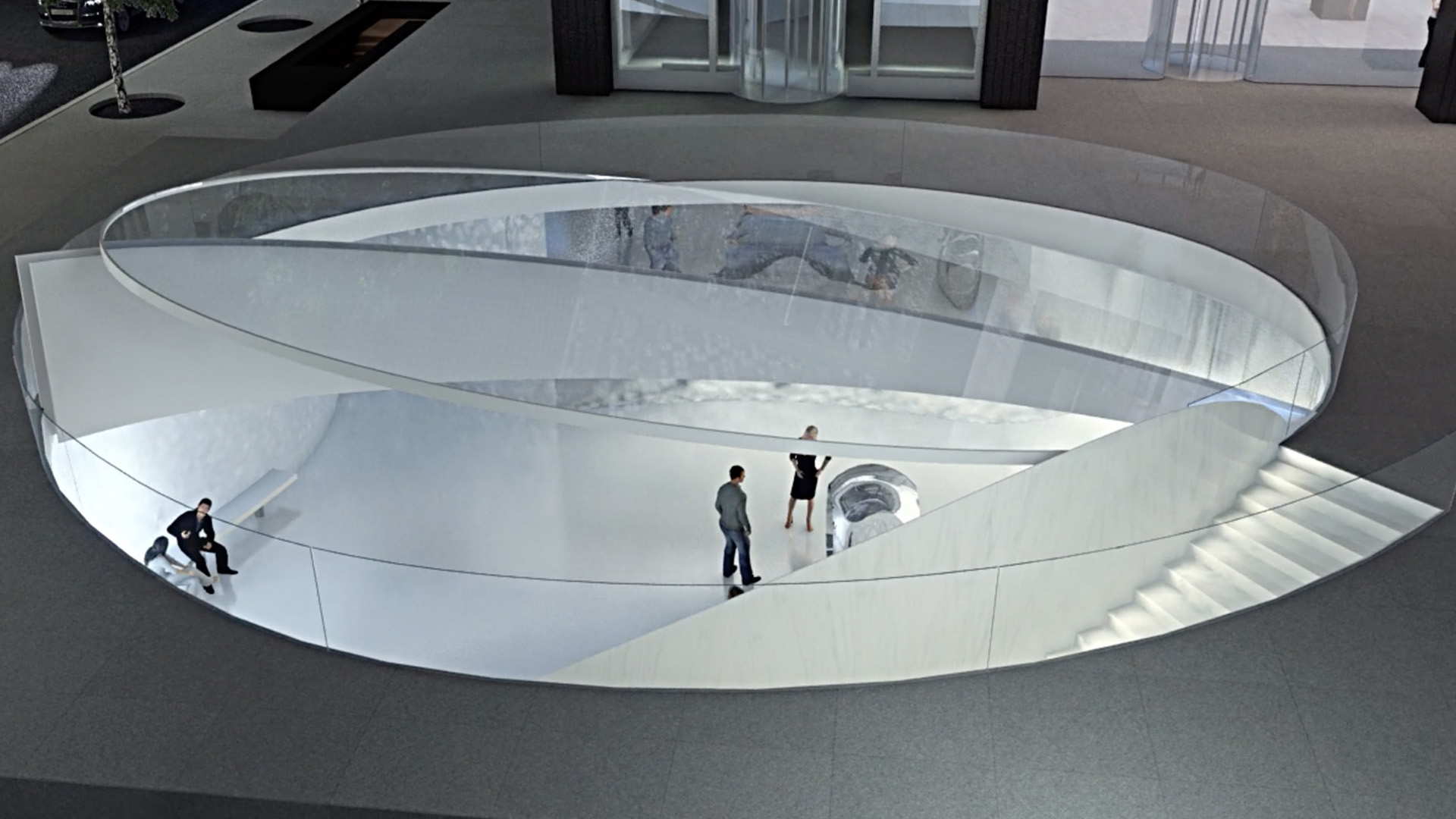SCORING SPACE

Here is the first in a series of conversations in which we ask a musician to compose a score specific to one of our designs – synchronizing with its own rhythm, structure and harmony. This is an instructive exercise – meant to create distance from our work and to see it through the lens of another creative artist – leading to a deeper review and understanding of the emotional experience and a projects sensibilities. With these initial goals and an open mind we approached the musician Chris Robertson to convey our vision for the public plaza at 1345 Sixth Avenue, a class A commercial office tower in Midtown Manhattan. Our proposed redesign (at the invitation of Fisher Brothers Development) was conceived as an instrument for moving people up and down from a public plaza to a new lower concourse level. The project is also an instrument of light — pulling daylight down and in the evening emanating light from within. As architects and designers, everything we do is purposeful; therefore, prior to beginning our only guideline for Chris was to give a reason for every chord and note he chose. Chris ran with the idea, as he vividly explains: “I have been a professional musician, songwriter and composer for 25 years and never had I received a request to write music for an architectural piece until my conversation with Hal Goldstein. I have written music for rock bands, movies, documentaries, TV shows, and commercials, but never for a space. I found the idea uniquely intriguing and challenging, and immediately said yes. Hal’s work is stunning, combining clean lines and multi-textured materials to create inviting, functional, artistic spaces that somehow make grand architectural gestures while seamlessly merging with their environs. Often, it’s impossible to determine whether his structures are emerging from the land or nature is enveloping them in some symbiotic, slow-moving dance. “I watched the video of 1345 several times, marveling at the curves, the combination of reflective and matte surfaces, the dense and transparent, light and dark. Sunken from the street, the plaza appears as a semi-hidden, beautiful chamber. I felt as if I could hear the space. Working with an acoustic guitar, I began with an A Minor 9. As musicians, we are trained to hear minor chords as melancholic, but adding the 9th provides a lift, as it is a whole step above the root of the chord. It would have been obvious to construct a descending chord sequence, since the space lies below street level. I also avoided adding an ascending sequence as the video moves us up the staircase; instead, I settled on something that attempts to blend with the atmosphere, as the architecture considers the city street. The second chord is an inversion of Am, actually the second inversion, Am with an E in the bass note. This gives the sonic illusion I’m switching chords, but I’m merely playing the same chord voiced in a different manner. It creates movement yet blends and relates to the first chord in the same way this architectural space blends with the environment. “Once I was happy with the finger-picked chords, it was time to create the sonic space for this to live in. It would have been a fascinating exercise to transport a portable studio to the physical space and set up microphones to capture the unique qualities of the environment, but I had to imagine what that might sound like. Ultimately, I did very little to the recorded guitar. I used the Capital Studios Chamber reverb, because I thought the acoustics of the plaza might emulate those of the legendary underground chambers, designed by Les Paul, 30 feet below the Capital Records Building in Los Angeles. While watching the movie, I added the reverb until it sounded the way it appears to my eyes and ears.

